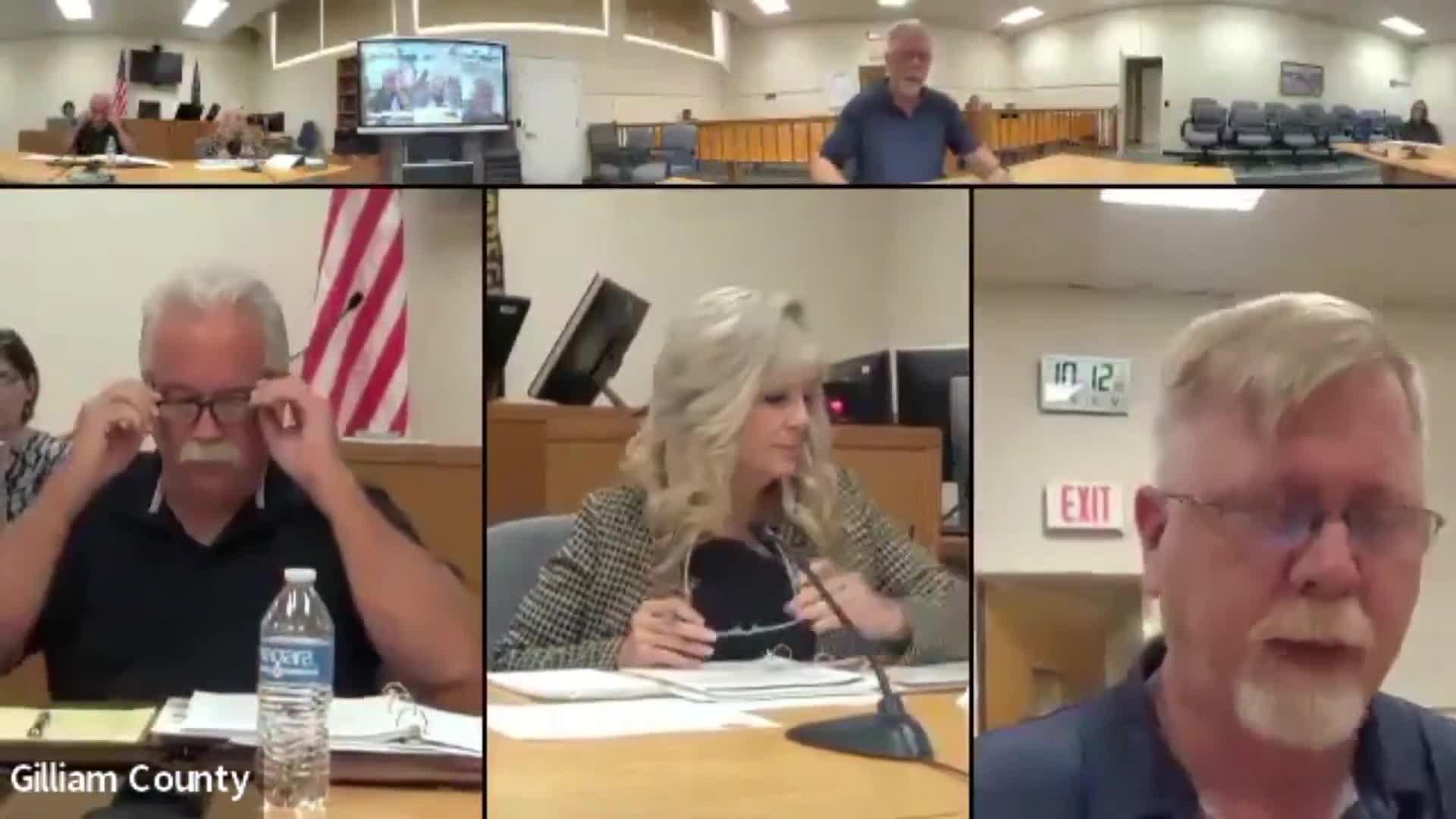Gilliam County Transportation reports rising ridership, bus barn near completion; court approves veteran transit grant
October 01, 2025 | Gilliam County, Oregon
This article was created by AI summarizing key points discussed. AI makes mistakes, so for full details and context, please refer to the video of the full meeting. Please report any errors so we can fix them. Report an error »

Todd Lake, director of Gilliam County Transportation, told the Gilliam County Court on Sept. 1 that the county’s public transportation service has expanded beyond medical trips to include social and recreational trips, that a new bus barn is nearing completion and that ridership, driver hours and vehicle mileage have increased sharply over the past three years.
Why it matters: The transportation service carries seniors, veterans and other residents to medical appointments, meals and social events across a sparsely populated county; rising usage and heavy mileage increase operating and replacement costs and affect near-term capital and volunteer planning.
Lake reported the program currently operates 13 vehicles, has 17 drivers (four part-time) and relies heavily on volunteers. He said the system’s driver hours rose from 5,085 in 2022 to 6,659 in 2024, with an estimated 7,464 driver hours for 2025. Vehicle mileage reported was 144,265 miles in 2022, about 190,300 miles in 2024 and an estimated 231,112 miles for 2025. Lake said two vehicles have been rotated out of service because of high mileage and the county plans to replace four vehicles with financed acquisitions.
On facilities, Lake said the new bus barn is nearly finished: most punch-list items are complete, vents will be installed soon and staff expect to move vehicles inside within a week so the fleet and drivers will be centralized and vehicles protected from weather.
Lake also summarized funding status: the county’s Highly Rural Transportation Grant (HRTG) application will be reviewed and the director said the HRTG will not be affected; the county’s Statewide Transportation Improvement Fund (STIF) plan was approved and funded through 2028, with some funding coming in 2025 and additional funding in 2026. The county receives reimbursement for eligible medical trips from the Greater Oregon Behavioral Health Initiative, and passenger donations have increased but do not cover program costs.
The court approved the 2025–26 Veterans in Highly Rural Areas grant agreement as part of the consent agenda earlier in the meeting; the consent motion was moved, seconded and carried by unanimous voice vote.
Lake credited volunteers and paid staff for keeping the service running; he named Forrest and JD as local volunteer drivers who provide regular service in Arlington and said several more volunteers have recently joined. He told the court the county provides Thursday bus service for the meal site and has run scheduled twice-monthly trips to larger towns for shopping or appointments in coordination with medical trips.
County members thanked Lake and applauded the program’s community value. Lake said passenger donations will continue to be accepted but the county will not charge fares that could make trips unaffordable. He asked the court to continue supporting the service as the county replaces high-mileage vehicles and manages growing operating demands.
The transportation update will be on future agendas as vehicle replacements and long-term funding beyond 2028 are worked out.
Why it matters: The transportation service carries seniors, veterans and other residents to medical appointments, meals and social events across a sparsely populated county; rising usage and heavy mileage increase operating and replacement costs and affect near-term capital and volunteer planning.
Lake reported the program currently operates 13 vehicles, has 17 drivers (four part-time) and relies heavily on volunteers. He said the system’s driver hours rose from 5,085 in 2022 to 6,659 in 2024, with an estimated 7,464 driver hours for 2025. Vehicle mileage reported was 144,265 miles in 2022, about 190,300 miles in 2024 and an estimated 231,112 miles for 2025. Lake said two vehicles have been rotated out of service because of high mileage and the county plans to replace four vehicles with financed acquisitions.
On facilities, Lake said the new bus barn is nearly finished: most punch-list items are complete, vents will be installed soon and staff expect to move vehicles inside within a week so the fleet and drivers will be centralized and vehicles protected from weather.
Lake also summarized funding status: the county’s Highly Rural Transportation Grant (HRTG) application will be reviewed and the director said the HRTG will not be affected; the county’s Statewide Transportation Improvement Fund (STIF) plan was approved and funded through 2028, with some funding coming in 2025 and additional funding in 2026. The county receives reimbursement for eligible medical trips from the Greater Oregon Behavioral Health Initiative, and passenger donations have increased but do not cover program costs.
The court approved the 2025–26 Veterans in Highly Rural Areas grant agreement as part of the consent agenda earlier in the meeting; the consent motion was moved, seconded and carried by unanimous voice vote.
Lake credited volunteers and paid staff for keeping the service running; he named Forrest and JD as local volunteer drivers who provide regular service in Arlington and said several more volunteers have recently joined. He told the court the county provides Thursday bus service for the meal site and has run scheduled twice-monthly trips to larger towns for shopping or appointments in coordination with medical trips.
County members thanked Lake and applauded the program’s community value. Lake said passenger donations will continue to be accepted but the county will not charge fares that could make trips unaffordable. He asked the court to continue supporting the service as the county replaces high-mileage vehicles and manages growing operating demands.
The transportation update will be on future agendas as vehicle replacements and long-term funding beyond 2028 are worked out.
View full meeting
This article is based on a recent meeting—watch the full video and explore the complete transcript for deeper insights into the discussion.
View full meeting
